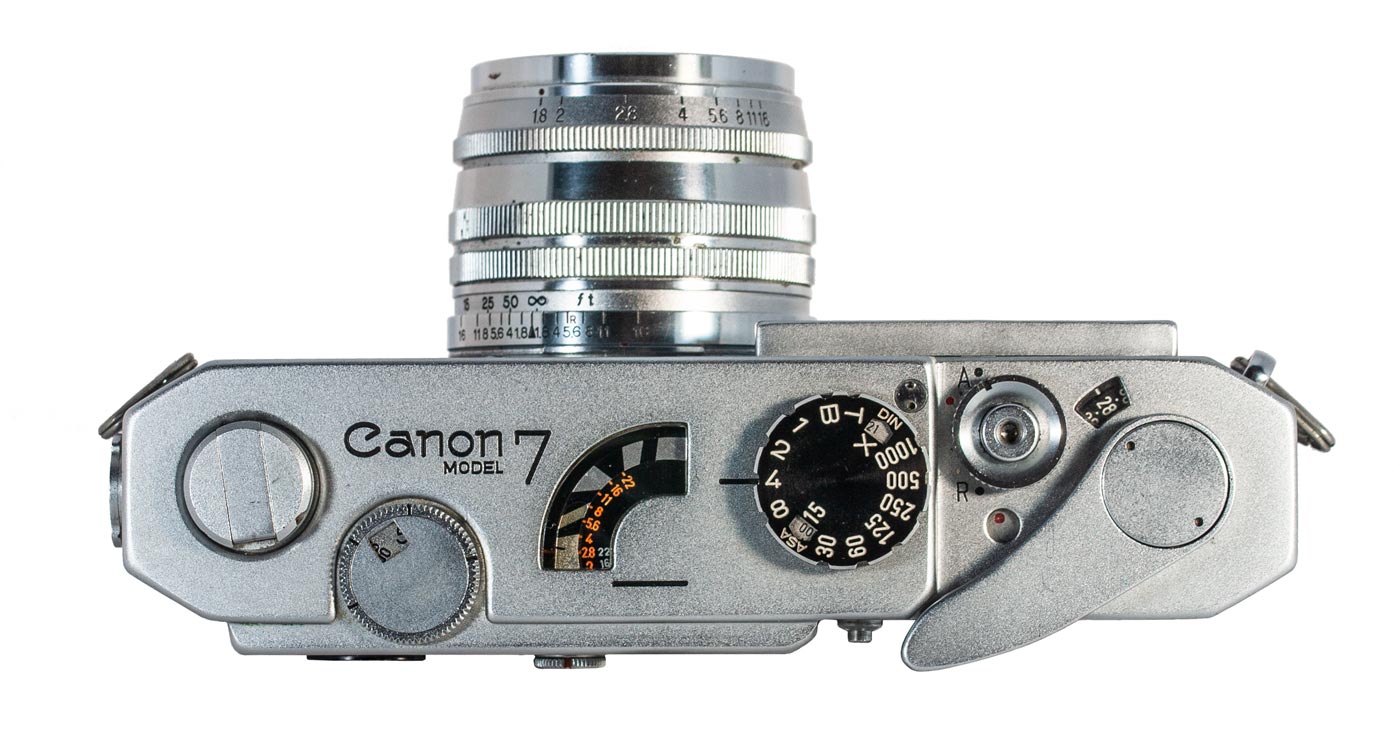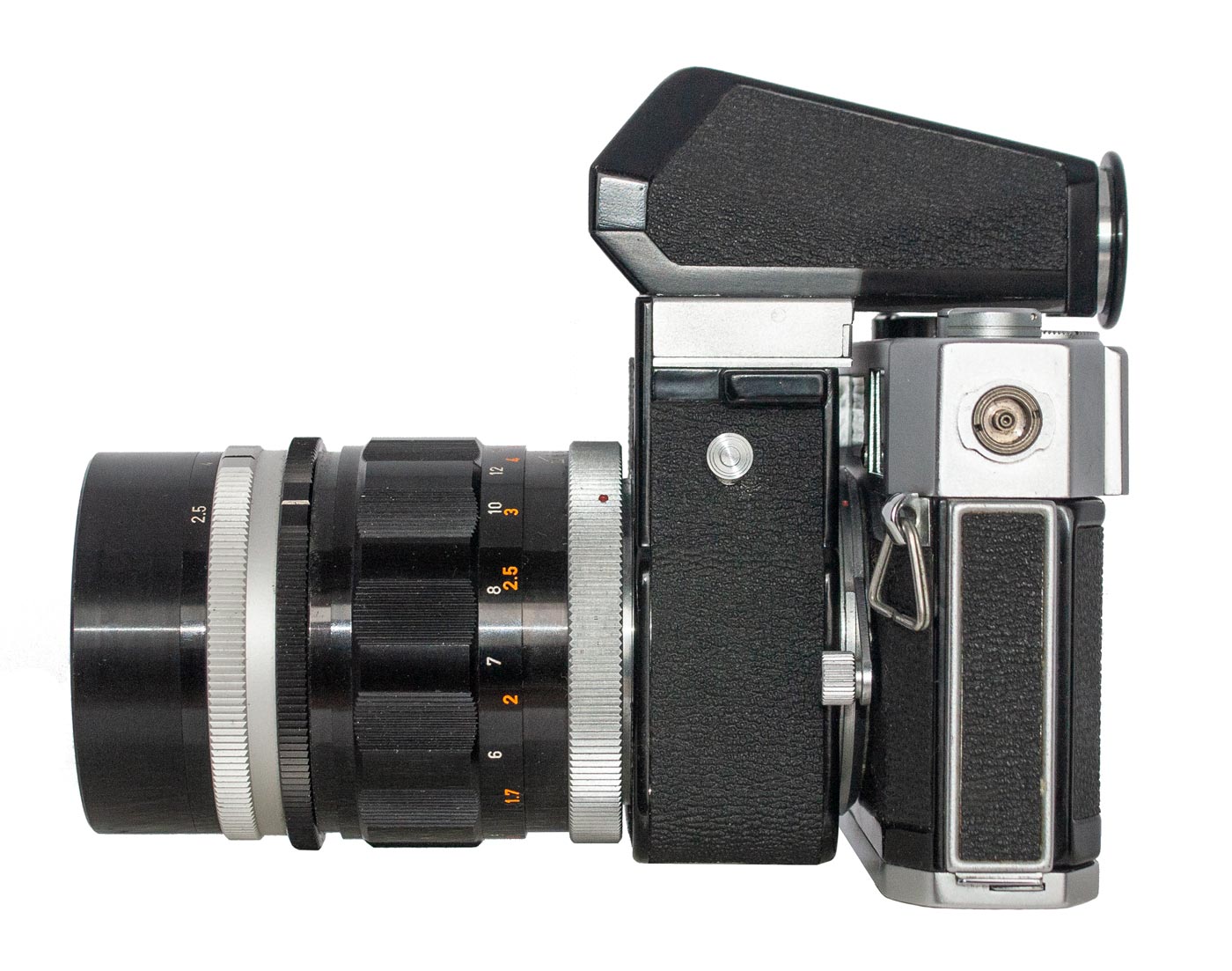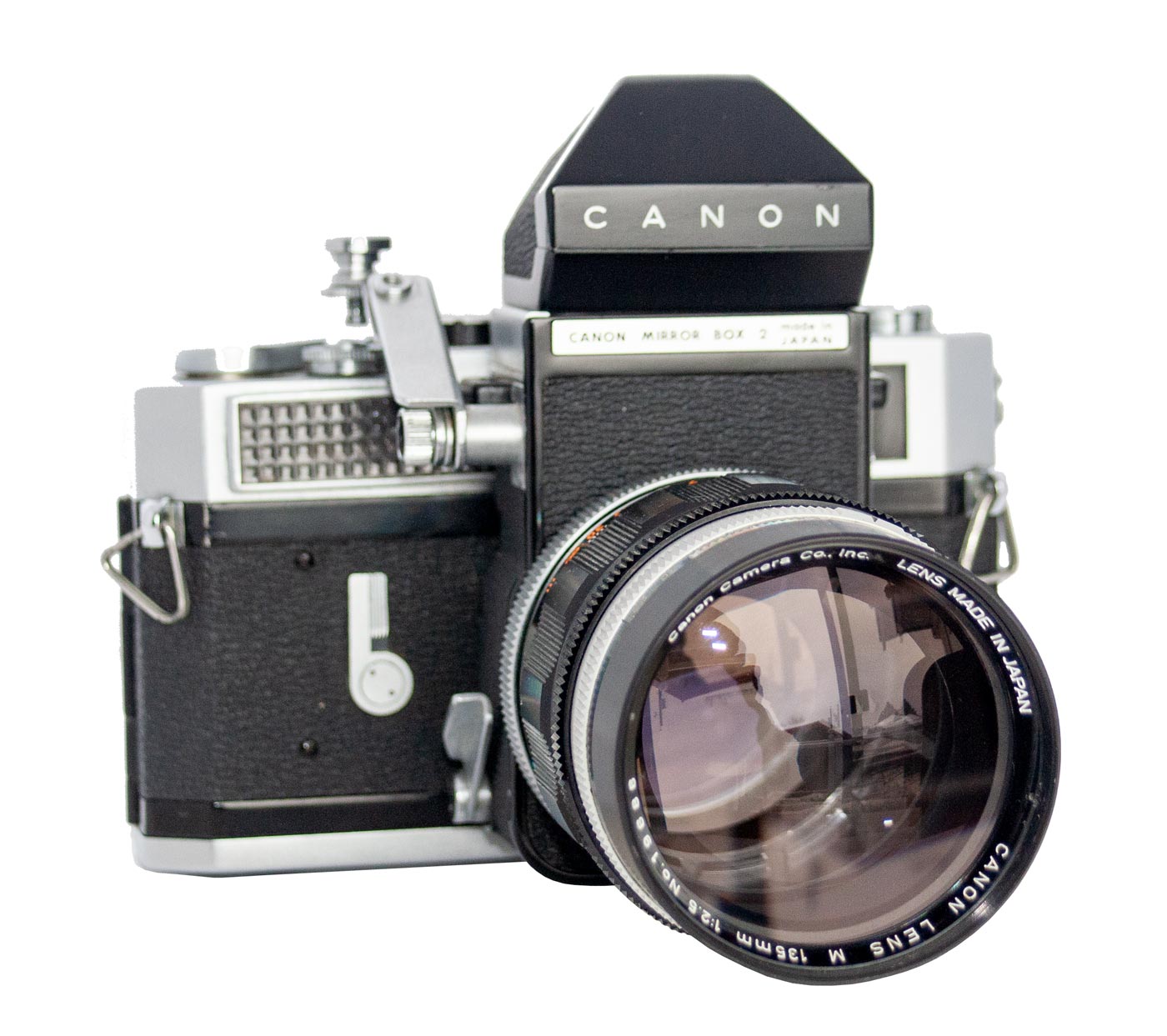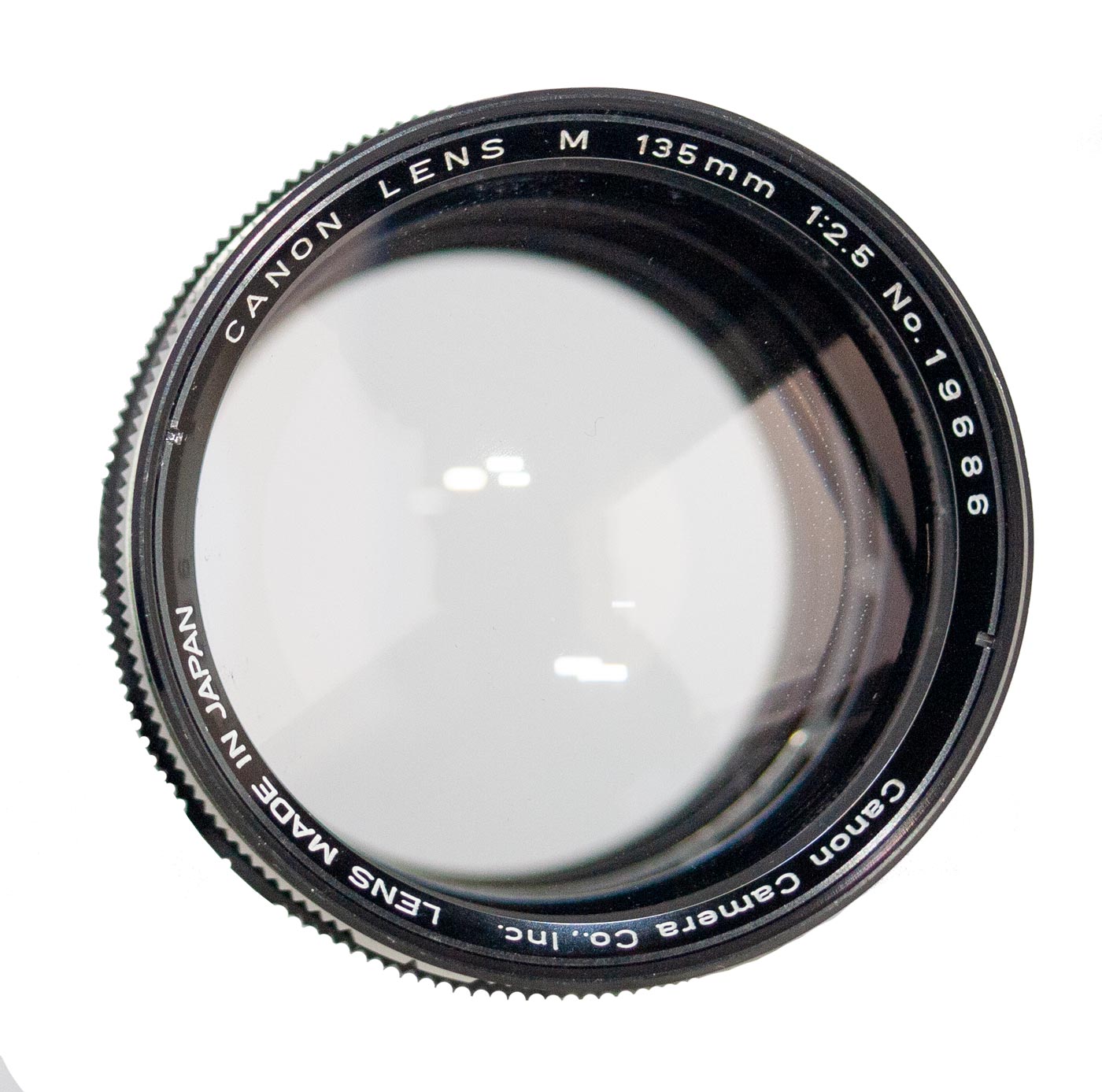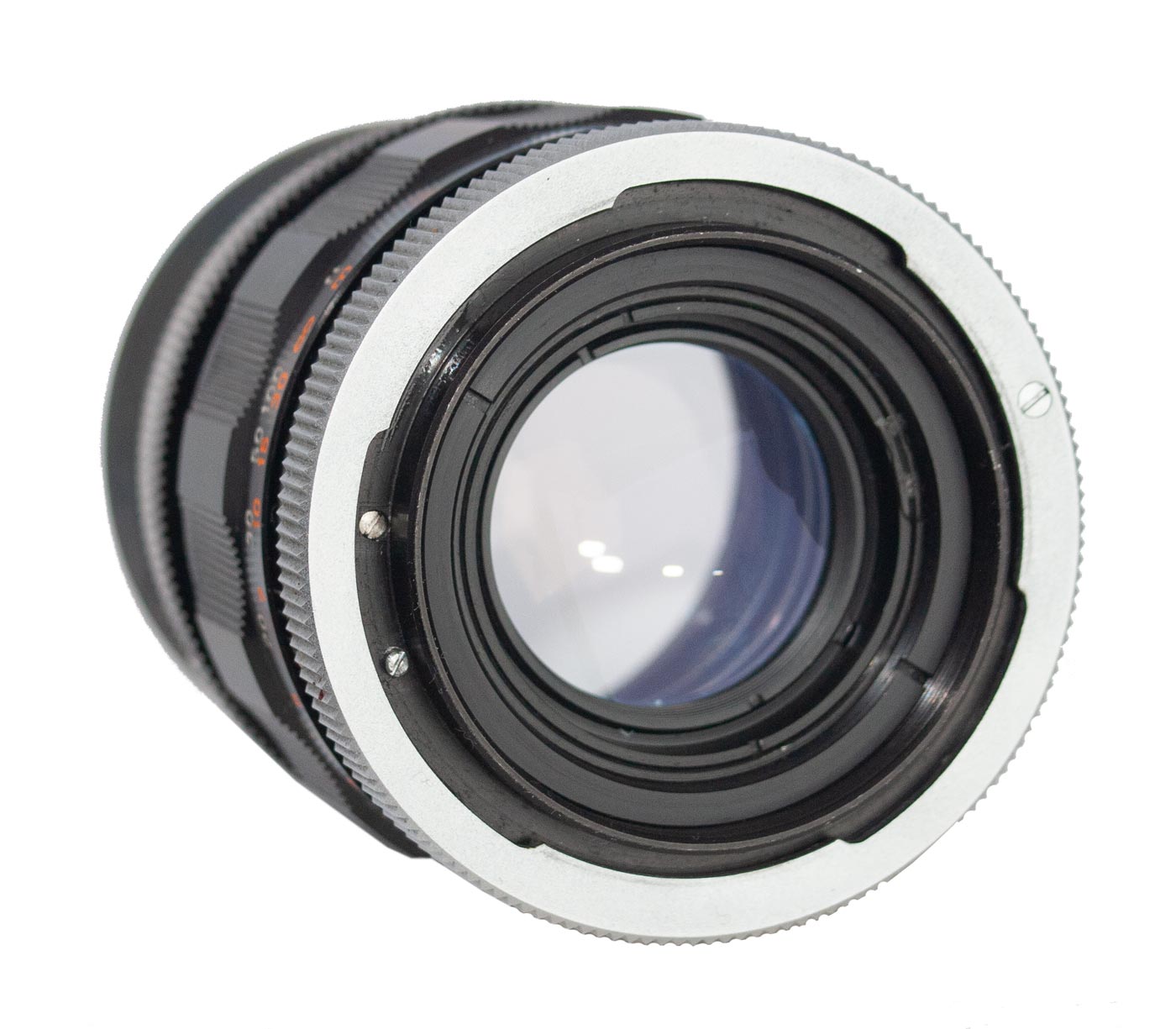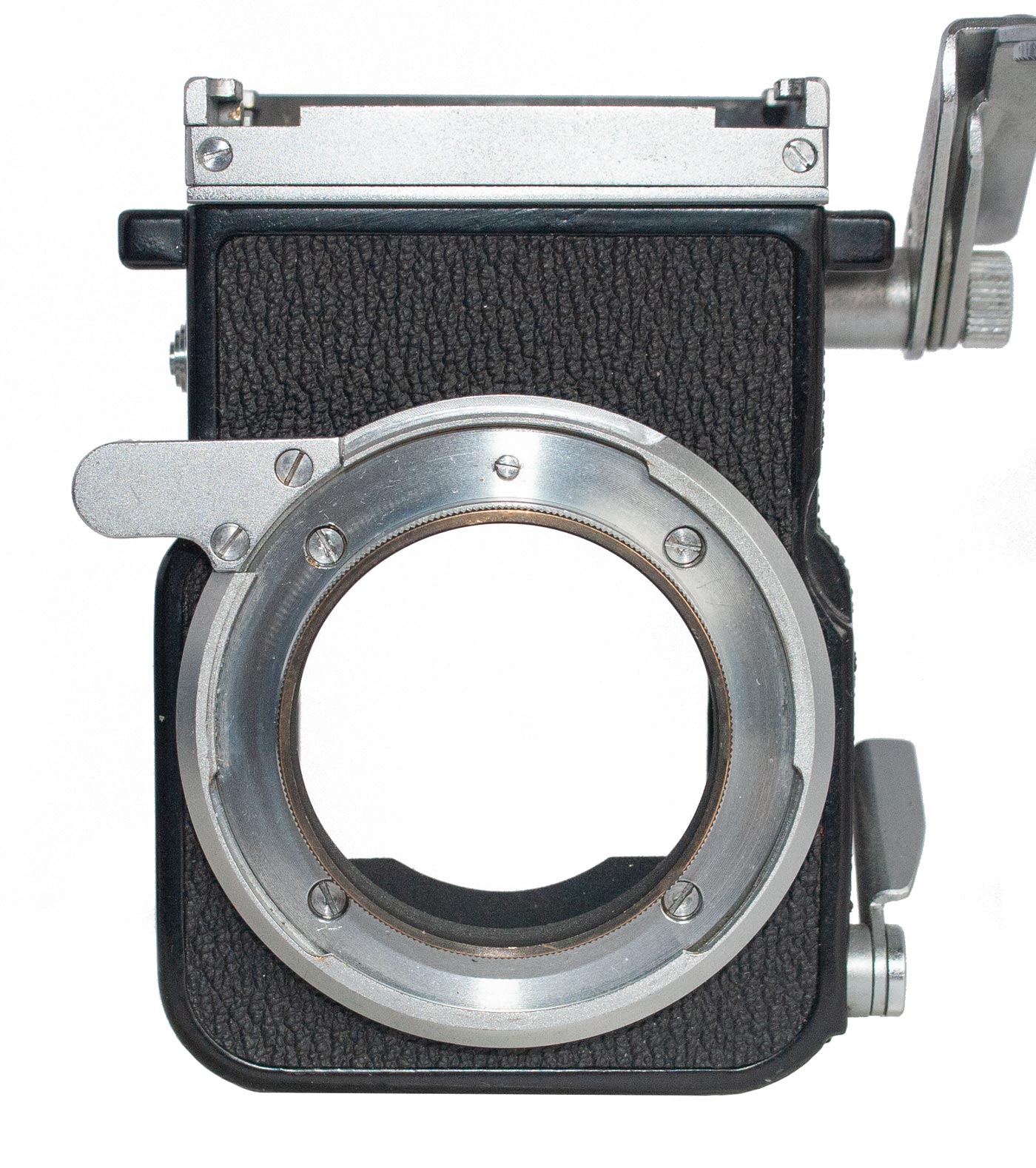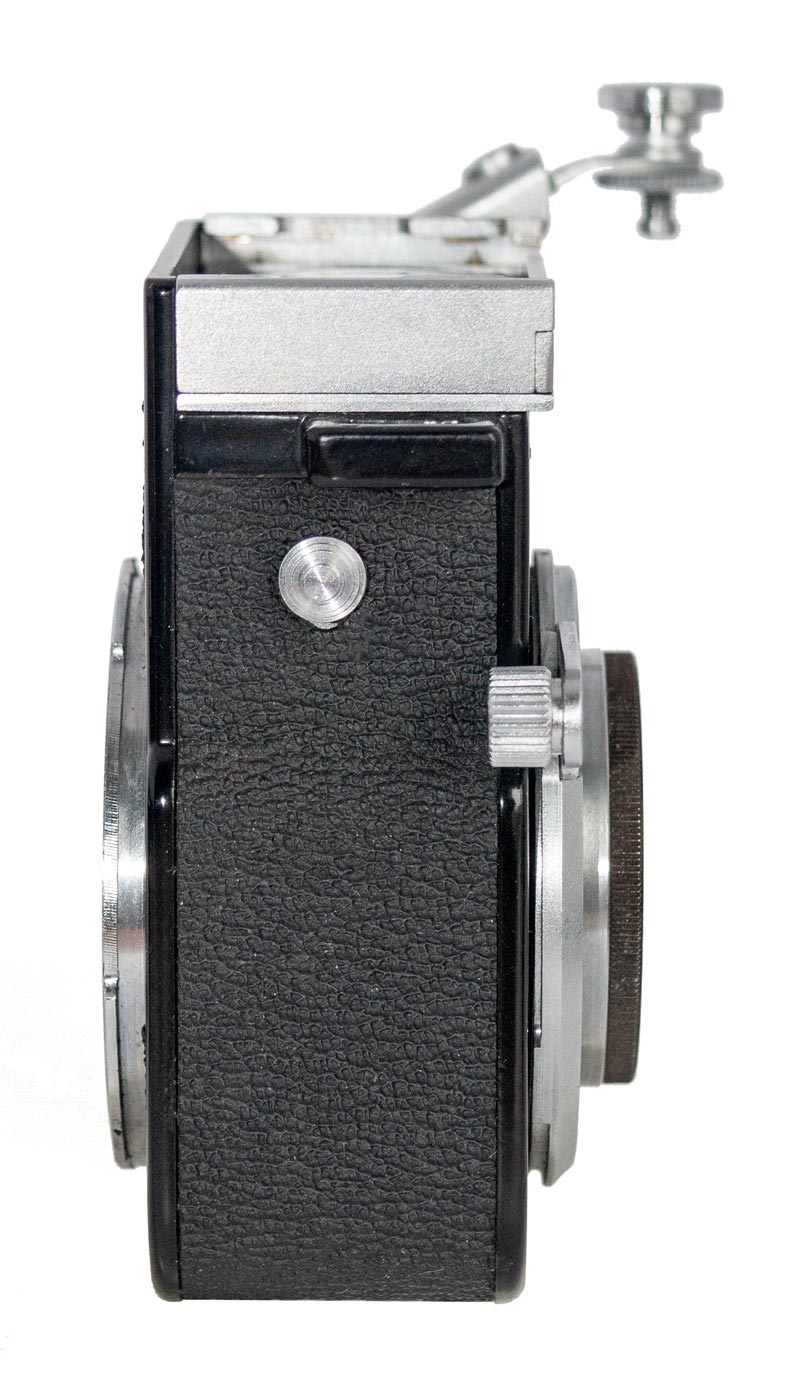The Model 7 is a hefty camera with almost the exact same dimensions as the Canon F-1 without its pentaprism.
Canon Model 7
The Model 7 was produced from June of 1961 through to November 1964. It was a successful camera for Canon and 137,250 units were produced and the approximate serial number range was 800,000 to 999,000. This was Canon’s answer to the Leica M-2 and M-3.
The camera is very equivalent to the M-3 but it has several advantages. It was Canon’s first rangefinder with a built in light meter. The light meter was
connected internally with the shutter speed dial and ASA selection dial so that the light meter read out in f stops. Lenses in those days did not communicate with the cameras and so the aperture was set manually.
Film loading was easier than in the Leica cameras as the back opened all the way, hinging on the right side and lifting on the left, allowing the film to be threaded across the sprockets and onto the take up rule.
The front of the camera shows the Selenium cell on the upper left corner with the range finder window embedded in it. The lens mount shows it’s distinctive bayonette lugs.
When it came to lens selection, the Canon lenses of the day were considered by many to be superior to Leitz lenses. However, if you disagreed, this camera would accept any Leitz lens you had. So, considering the added features and the lens versatility, it was an exceptional camera for much less than the M-3.
The range finder window was moved to the right lengthening the base of the range finding triangle. This increased rangefinder accuracy, but, more importantly, it moved the window to a location that it would not interfere with the new f 0.95 “Dream Lens” introduced with this camera.
he lens mount had the same M-39 threads for existing Canon lenses but it also added lugs that a special bayonet mount could lock onto. Only two offerings used these lugs, the new dream lens mentioned above, and the Mirror Box 2 which is described below.
In the view finder, which was big and bright, lens frames were projected onto the field of view. Lens lengths of 35mm, 50mm, 85-100mm and 135mm could be selected by a dial on the top deck.
We have a Newsletter
There is a Newsletter for thecanoncollector.com to keep you up to date on what we are posting. Try it!
The back is plain and flat without a holder for film data. The round switch to the right of the view finder selects the high or low setting for the light meter.
The back swings open for easy loading. The shutter curtains are metalic and you can see a previous owner could not keep his fingers off of them.
In the view finder, which was big and bright, lens frames were projected onto the field of view. Lens lengths of 35mm, 50mm, 85-100mm and 135mm could be selected by a dial on the top deck.
It is interesting that Canon did omit an equipment shoe or hot shoe on the top of the camera.
This was the last rangefinder camera to be available in all black paint. It came usually with a 50mm f/1.8, f/1.4, f/1.2 or f/0.95 lens. Some were branded as Bell and Howell for marketing in the United States.
So, what is it like to use? This is a solid camera. In your hand you know you have quality machinery. The view finder is bright and clear and a pleasure to use.
Film is wound with a standard single stroke lever. The collar around the trigger button can be turned to “A” to use the shutter. Next to that is a red dot. If the collar is set there the trigger is locked and the shutter cannot be fired. Finally, there is an “R” position which still keeps the shutter locked but unlocks the winding sprockets allowing the film to be rewound at the end of the roll.
The light meter on my camera is not working so I have to use an external light meter making the experience very much like using a Leica M-3 which also does not have a built in meter.
I like shooting with this camera. It is easy to use, has great lenses, is very quiet, loads easily. For a rangefinder camera, it is top of the line. And very close to the end of the line for Canon and range finder cameras.
The Model 7 came out long after the introduction of the Canonflex but Canon felt there was still room in the market for another rangefinder. And they made it a good one. The Model 7 was updated with a CdS cell lightmeter in the Model 7S. And the model 7S was updated with the 7SZ which had improvements to the optics in the viewfinder. But that was the end. Canon’s last rangefinder was just a few years away.when the 7 was introduced.
The Mirro Box 2 with a 135mm f/2.5 lens attached to a Model 7. The diagonal mirror was lowered into the light path with the lower lever on the side of the box. Depressing the lever that extended over the shutter button allowed the mirror to retract just before the shutter fired. It actually works really well.
If you look inside the back cover of the Model 7 User Manual you will see Canon offered an Accessory called the “Mirror Box 2”. This device was introduced with the Model 7 and was intended to solve a problem range finder cameras had with long focus lenses.
The further from the camera the subject is the more difficult it becomes to focus because the changes in the rangefinder prism angle become vanishingly small. But, if you have experience with manually focusing long lenses, you know that focus become more critical the longer the lens. So it becomes necessary to focus some other way and that way was to focus while viewing the image on a ground glass.
Canon had experimented with such a system with their Mirror Box 1 but that was not a very practical setup. Their second attempt was with the Mirror Box 2 and this was a far more practical solution.
The round button on the left side of the MB2 released the prism which could be removed to view the grown glass directly.
With the prism in place the image could be viewed through an eyepiece at the back of the camera. The view was very much like a modern SLR.
The unit attached to the lugs on the lens mount of the Model 7. Inside the “box” a 45 degree mirror was dropped into the light path and the image was deflected up onto a ground glass. The ground glass could be viewed directly or through a prism which projected the image on the ground glass to the back of the camera where it was viewed through and eyepiece.
This eyepiece gave a view that was remarkably similar to an SLR camera such as the Canonflex. The MB2 allowed very long lenses to be effectively attached to the rangefinder camera.
This 135mm lens was the shortest focal length lens available for the Mirror Box 2. It was never intended that the MB2 be used with shorter focal length lenses.
At the back of the camera the eyepiece was exactly where you would find it on an SLR. The image was bright and illuniation of the ground glass was even.
The eyepiece was at the back of the camera where it could be used as if the camera was an SLR which it effectively was with the MB2.
The list of lenses that would fit the Mirror Box 2 is not long. By the time the Model 7 came along Canon was already into the Single Lens Reflex revolution with the Canonflex series. There was simply no time left to develop an extensive lineup of long lenses for the old system.
If we look in the Bell & Howell Catalogue from March of 1969 on pages 31 and 32 we find the available telephoto lenses and accessories for the Model 7 and Mirror Box 2.
Two lenses were developed specifically for the MB 2 and they mounted directly on it using a mount that closely resembled the R mount on the Canonflex. Focusing was accomplished by rotating the lens barrel in the usual manner. These lenses were the M 135mm f/2.5 and the M 200mm f/3.5. Just these two lens alone constituted this somewhat unknown M series.
Then there were 4 lenses, 400mm f/4.5, 600mm f/5.6, 800mm f/8.0 and 1000mm f/11 available which were a little different. The Mirror Box 2 was still on the camera but between the lens and the MB2 was a a Bellows R which was used to focus the lens. Have a look at the images in the catalogue and you will see how the arrangement worked.
This 135mm lens was the shortest focal length lens available for the Mirror Box 2. It was never intended that the MB2 be used with shorter focal length lenses.
This is a manual lens and there is no pin to control the aperture. The mount ring is adapted from the “R” mount on the Canonflex but R mount and later lenses do not fit.
The front of the Mirror Box shows the lens mount lugs which resemble the Canonflex “R” mount. R mount lenses almost fit but they are not useable on the Mirror Box 2.
The upper lever depresses to fire the shutter. It also triggers the mirror moving out of the way. Once fired the mirror remains up until the lower lever is depressed to bring it back into the light path.
On the other side of the box is a round button which releases the prism so it can be removed exposing the ground glass screen which can be viewed directly. The box still functions normally without the prism.
The diagonal mirror, seen here, does not swing up out of the way. It travels up into the housing above but remains at 45 degrees to the camera optical axis.
The shutter trigger arm is a two piece structure. The top section is fixed to the mirror box and contains a threaded hole for a cable release. The bottom portion can be depressed causing a threaded pin to press the shutter button. This pin is adjustable so that the mirror moves out of the way just as the shutter fires. This setting can be locked in place with a locking ring.
So, how well does this system work? Well, actually, it works surprisingly well. It actually feels like an SLR. The trigger release can be adjusted so that the mirror pops up just as the shutter fires. The trigger arm is a two piece affair. The top piece is fixed to the Mirror Box and it has a threaded hole in it for a cable release. It takes a little work to take a picture. You have to advance the film. Then you make sure the mirror is fixed in the down position, you then set the aperture which is strictly manual. Only then can you fire the shutter and then start the process all over again for the next shot. If you like to tinker with your gear, this is the rig for you!
I don’t have one of the lenses that require the Bellows R so I can’t comment on how easy they are to use. My experience with bellows units makes me think that focusing may be a fiddly process. But then that is the fun of using this old equipment.
So yes, you have long focus lenses available for the Model 7. However, I don’t think I would want to shoot sports action with this rig. It would be difficult. Using this old gear really makes you aware of how wonderful the modern cameras are with auto exposure, auto focusing, and image stabilization.
This website is the work of R. Flynn Marr who is solely responsible for its contents which are subject to his claim of copyright. User Manuals, Brochures and Advertising Materials of Canon and other manufacturers available on this site are subject to the copyright claims and are the property of Canon and other manufacturers and they are offered here for personal use only.







